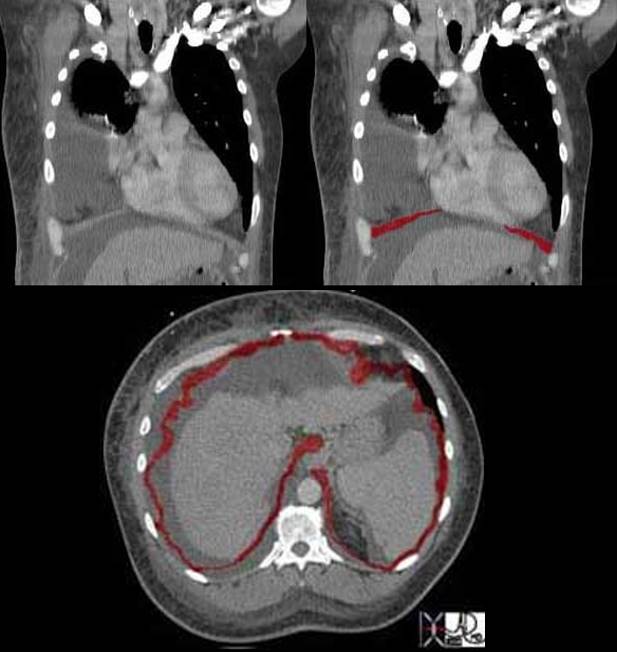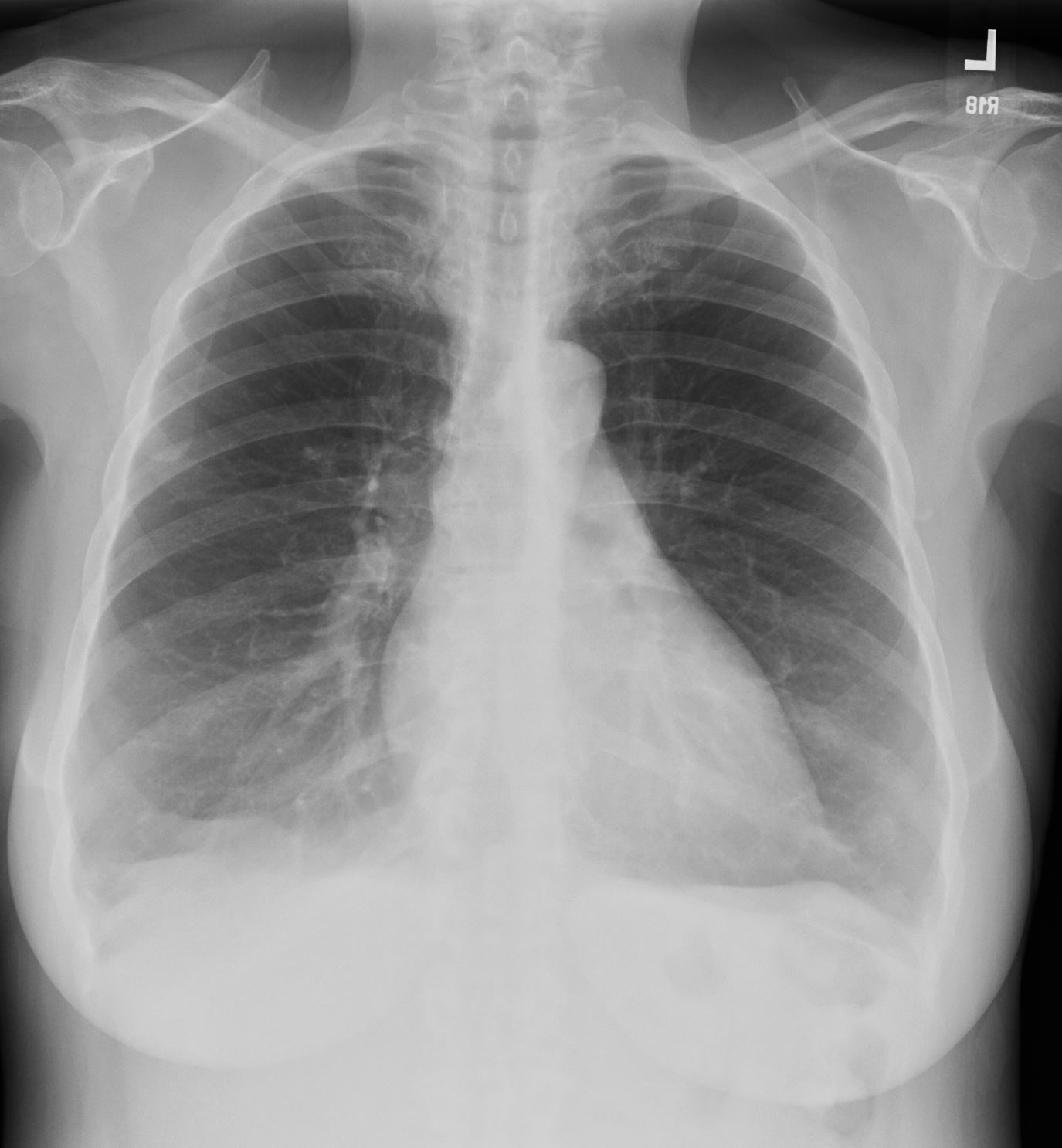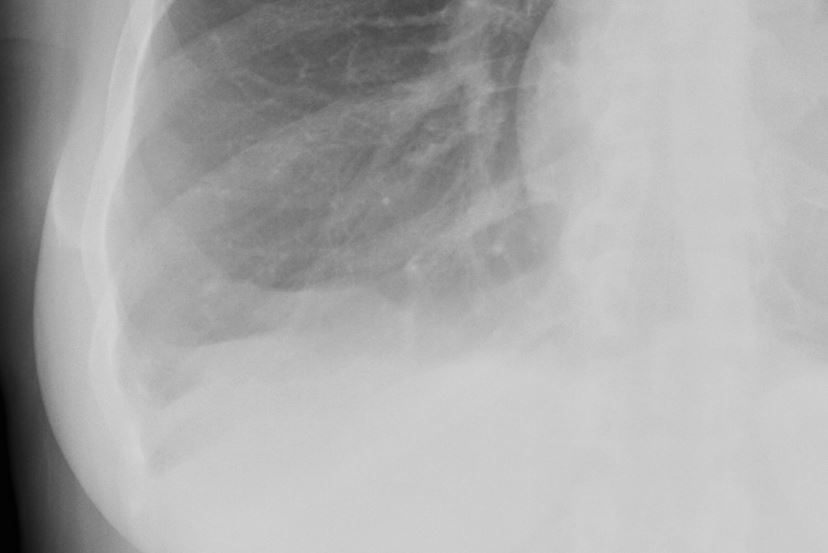
The diaphragm plays the most important role in breathing. Although it covers a large area it is relatively thin and therefore it usually cannot be fully appreciated on axial cuts. Can you see the diaphragm in this coronal image, and if so why is it so well seen? Additionally why do you think it does not continue all the way across the midline?
The reason we see the diaphragm so well is because there is fluid in both the chest cavity and abdominal cavity and the interface of fluid density on the contrasting soft tissue density of the diaphragm makes it more easily discernible. The central part of the diaphragm is called the central tendon of the diaphragm and it is in continuity with the pericardium. True to its name it is tendinous and therefore very thin and difficult to image.
In this cross sectional image of the same patient the diaphragm is seen as an undulating thin muscle. Since it is dome shaped with its attachments inferiorly only parts in this particular cross section are seemingly attached to the ribs. The undulations are caused by tendinous attachments that extend from the ribs to the central tendon. The full diaphragm was not visualized in this patient and the digitally manipulated image has interpolated the data to provide a circumferential view.
Ashley Davidoff MD TheCommonVein.net 42557b04c

Ashley Davidoff MD TheCommonVein.net 130896c
In COPD and Emphysema

Flattened and Partially Inverted
Ashley Davidoff MD TheCommonvein.net

Flattened and Partially Inverted
Ashley Davidoff MD TheCommonvein.net

Flattened and Partially Inverted
Ashley Davidoff MD TheCommonvein.net
Links and References
Videos AUR on Chest Wall and Diaphragm
| Title | web link |
|---|---|
| Chest Wall Diaphragm | AUR Cardiothoracic Imaging |
